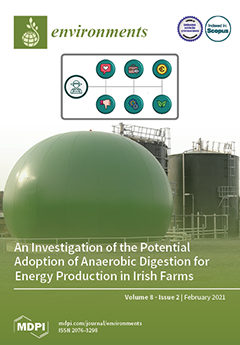The Galleria Italia waters drain the complex tunnel system of the former Hg-mining area of Abbadia San Salvatore (Tuscany, central Italia) and feed the 2.5 km-long Fosso della Chiusa creek. The mining exploitation was active for more than one century and more than 100,000 tons of liquid mercury were produced by roasting processes of cinnabar (HgS). In this work, a discontinuous geochemical monitoring of the Galleria Italia circumneutral waters was carried out from February 2009 to October 2020, during which the main physicochemical parameters, main and minor dissolved species and trace elements (including Hg) were determined. In the observation period, significant variations in the water chemistry were recorded, particularly when flooding waves, due to intense precipitations, occurred, with the two main events being recorded in February 2009 and January 2010. The chemical composition of the Galleria Italia waters was Ca(Mg)-SO
4 and related to congruent dissolution of gypsum/anhydrite at which a contribution from carbonatic and silicatic minerals and partial solubilization of CO
2 and and H
2S oxidation is to be added. Regarding the trace elements, Al, Mn and Fe were up to 1500, 768 and 39520 μg L
−1, with these elements also showing high contents in the sediment precipitating by the Galleria Italia waters. In most cases, dissolved mercury was below the instrumental detection limit (<0.1 μg L
−1), although occasionally it reached >1 μg L
−1. Considering a mean flow rate of 40 L s
−1 of the discharged water, the amount of dissolved mercury released from Galleria Italia was computed, although most mercury was occurring in the sediment (1.2 mg kg
−1). A more realistic computation of mercury released from Galleria Italia should involve a sampling network along the Fosso della Chiusa before entering the riverine system of the Tiber basin, into which dissolved and suspended mercury are to be determined along with that occurring in the sediments.
Full article





